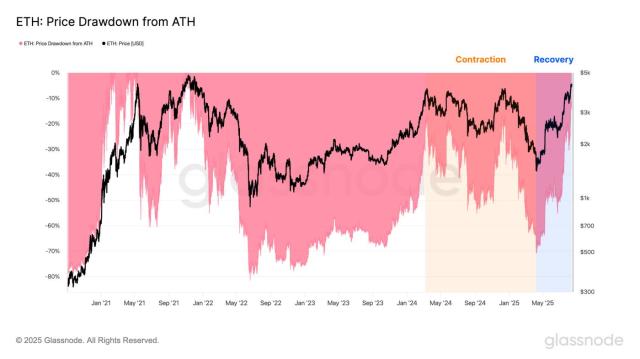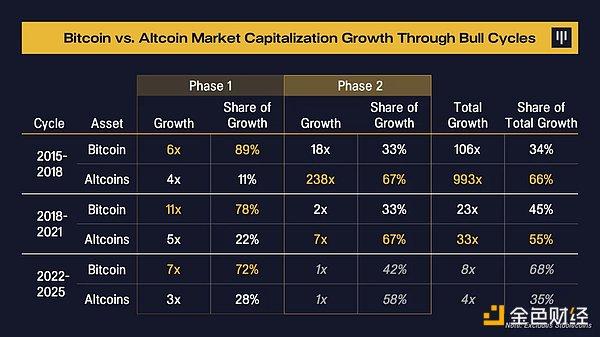Source: Pantera Capital
Original Title: DAT Value Creation
Compiled and Organized by: BitpushNews
Preface:
Crypto venture capital firm Pantera Capital first revealed in its latest blockchain letter that it has invested over $300 million in Digital Asset Treasury (DAT) companies, which are a growing number of publicly listed companies holding cryptocurrency reserves on their balance sheets.
Pantera stated that its investment philosophy for DAT companies is simple: "DATs can generate returns, thereby increasing the net asset value per share, and over time, you will have more underlying token ownership than simply holding spot. Therefore, holding DATs can provide higher return potential compared to directly holding tokens or through an ETF."
Original Text:
DAT VALUE CREATION
Our investment philosophy for Digital Asset Treasury companies (DATs) is based on a simple premise:
DATs can enhance net asset value (NAV) per share by generating returns, thus providing more underlying token ownership over time compared to simply holding spot.
Therefore, holding DATs may offer higher return potential compared to directly holding tokens or through an ETF.
Pantera has deployed over $300 million across different tokens and capital market DATs. These DATs are leveraging their unique advantages and adopting strategies to increase their digital asset holdings through per-share appreciation. Here is an overview of our DATs portfolio.
[Images omitted]
BitMine Immersion (BMNR) was the first investment in the Pantera DAT fund, embodying a company with a clear strategic blueprint and execution capability. As Chairman, Tom Lee from Fundstrat has outlined BitMine's long-term vision: acquiring 5% of ETH's total supply - what they call the "5% Alchemy". We find it valuable to use BMNR as a case study of an efficiently executing DAT.
[Rest of the text continues in the same professional translation style]
Its development is truly remarkable. Stable operation and uninterrupted trading for ten years. Ten years of innovation and reshaping the future of the global market.
We have supported numerous visionary teams and developers who have built applications and infrastructure that drive the Ethereum mission forward. Our commitment to this ecosystem remains unwavering. The work is not yet complete.
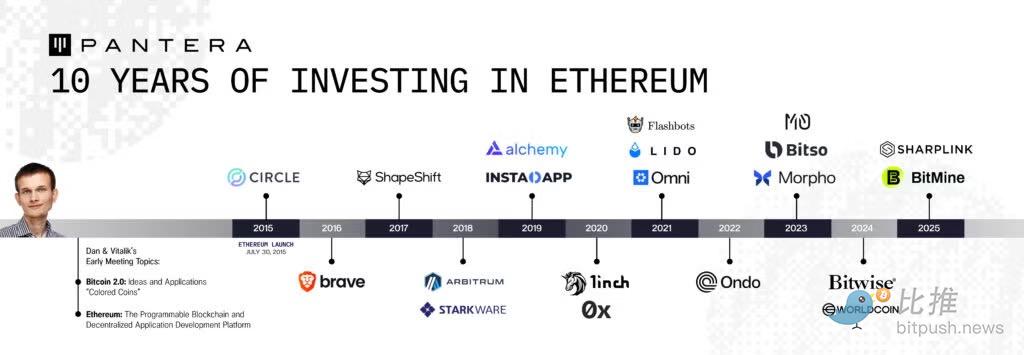
Prediction Markets Revival: Markets for Everything
The revival of prediction markets is underway. While new prediction markets continue to emerge, there are now numerous prediction trading platforms across various market event types, formats (such as mobile platforms, Tinder-like swipe interfaces, trading terminals), and regions.
This revival is catalyzed by several events:
The success of Polymarket and Kalshi: Prediction markets continue to achieve billions of dollars in monthly trading volume. Their success—especially in election markets following the 2024 US Presidential election—demonstrates the demand for event-based markets.
Regulatory clarity for prediction market event contracts: On October 2, 2024, the DC Circuit Court of Appeals rejected a request for a stay of execution, allowing Kalshi to launch its election contracts. Robinhood also launched an election market in the same month. The impact of regulatory clarity on innovative companies in financial markets is astounding.
Growth of the speculative generation: The median age of first-time homebuyers is 38, significantly rising in recent years. Zero-day options trading is about to account for two-thirds of all daily options trading, indicating that retail investors are eager to win quickly in volatile markets. The "TikTokization" of financial markets continues, bringing with it a desire to bet on more markets until there's nowhere left to bet.
While the speculative allure of prediction markets drives participation, these markets are far from useless. By aligning incentives with information, they can help discover accurate information and insights.
Markets help predict outcomes, and various new markets are emerging—including political events, corporate earnings predictions, weather forecasts, and FDA drug approvals.
As prediction markets grow, many teams have taken different product directions and market entry strategies. From an investment perspective, I believe that new prediction markets that will achieve long-term success will focus on building excellent products serving markets with the following common characteristics:
Markets where events occur very frequently
Markets with high leverage or the ability to win massive returns with minimal capital
Markets with high result value—where the prediction value itself is significant
Let's discuss this in more detail:
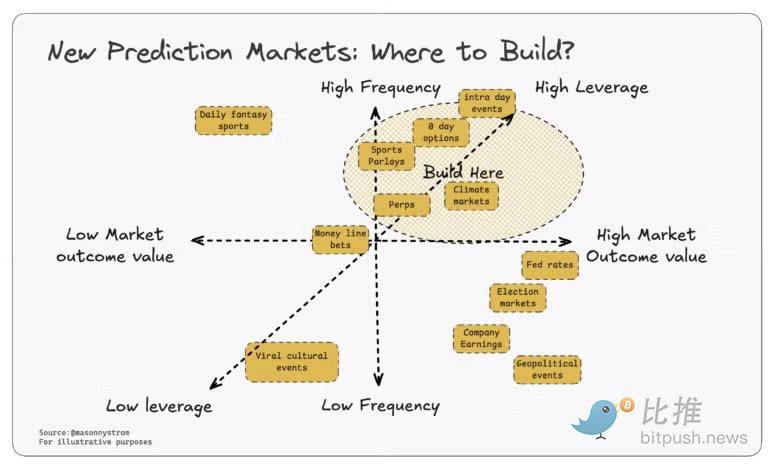
High Leverage
Users want to obtain high leverage or accumulate odds to increase returns. Parlays, perpetual contracts, intraday event markets—all these prediction market products have the potential to increase demand for prediction market events. Imagine a midterm election where someone could make a correct parlay bet on all outcomes. Given the rise of zero-day options, intraday markets (half-day, hours, minutes) are also worth considering.
High-Frequency Prediction Markets
Prediction markets are habitual—users will come to bet on markets they're interested in. More markets help maintain user engagement, but what's truly important is the existence of high-frequency markets, which can drive user retention.
Users wanting to bet on one-off high-attention events (presidential elections, pop culture events, etc.) can do so on any platform and will likely end up using their most frequently visited platform. Having more recurring markets will also create better economic benefits for platforms, allowing them to list more markets, pay customer acquisition costs, or be more competitive in other ways. This has already happened in sports betting, with platforms like DraftKings using DFS (Daily Fantasy Sports) as a valuable customer acquisition and retention tool, cultivating habitual behavior.
High Market Result Value
Elections are not frequent events, but they have high signal value. This attracts significant capital to these markets.
Polymarket recently released FDA approval results, decisions that can make or break billion-dollar enterprises. Kalshi's climate markets have predictive signal value, and theoretically, other types of derivative contracts could be built based on numerous daily prediction signals. Markets with high result value will drive higher trading volumes and deeper liquidity.
Conversely, many pop culture markets—reality shows, Grammy winners, Nobel Prize laureates—are fun to bet on but have low result value. Sometimes result value is low because outcomes can be manipulated. A prediction market combining shows like Survivor would be interesting, but if the betting amount is large enough, people will find ways to manipulate the market.
The prediction markets boom will leverage efficient markets to generate valuable predictive insights and provide a leveraged entertainment form for the same customers who trade individual stocks or engage in sports betting. We are about to see an explosion of market types and things people can bet on. The era of Markets for Everything is about to begin.
Entering the Second Stage of the Bull Market
Bitcoin tends to lead bull market cycles, with Altcoins lagging in the early stages. As the cycle progresses, Altcoins typically gain momentum and outperform Bitcoin towards the cycle's end. We call this the "first stage" and "second stage" of the bull market.
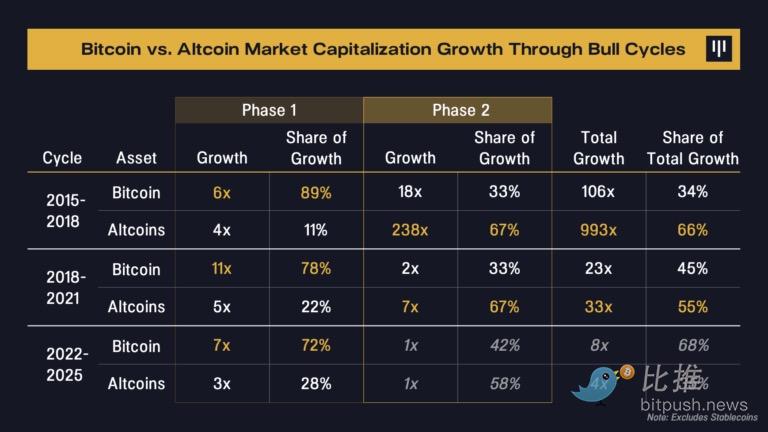
Importantly, in the past two cycles, Altcoins contributed most of the value creation. In the 2015-2018 cycle, Altcoins accounted for 66% of crypto total market cap growth. In the 2018-2021 cycle, they contributed 55%.
So far in this cycle, Altcoins have only accounted for 35% of total market growth.
Historically, Bitcoin has benefited from regulatory clarity—not only because it's classified as a commodity but also because its role as "digital gold" is fully understood. This was a key driver of its outperformance over Altcoins in the early part of this cycle, as Altcoins have traditionally faced greater regulatory uncertainty—until recently. With a new government in place, this dynamic is changing, driving meaningful progress in digital asset innovation.
The regulatory clarity and favorable conditions historically biased towards Bitcoin are now beginning to extend to Altcoins. The market is starting to reflect this.
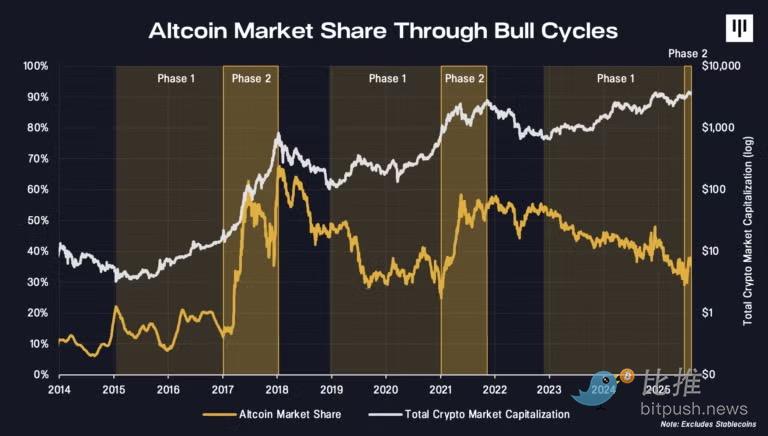
As regulatory victories accumulate, momentum is building. Last month, President Trump signed the GENIUS Act into law, creating conditions for the flourishing of regulated stablecoins in the US, which can become an engine for global financial transactions. The CLARITY Act, already passed by the House, aims to establish clearer boundaries between digital commodities and digital securities—helping to resolve long-standing jurisdictional uncertainties between the SEC and CFTC. A transformation is underway, and there's reason to believe non-Bitcoin tokens will be among the biggest beneficiaries.
Innovation and development are accelerating, especially in the tokenization space. Robinhood recently launched stock tokens supported by Arbitrum, aimed at democratizing stock investment and creating more efficient markets. Major US banks like Bank of America, Morgan Stanley, and JPMorgan are exploring issuing their own stablecoins. BlackRock's BUIDL fund has accumulated $2.3 billion in tokenized Treasury bonds. Figure has processed over $50 billion in blockchain-native RWA transactions. In addition to its tokenized Treasury bond fund, Ondo plans to offer over 1,000 tokenized stocks on the NYSE and Nasdaq through Ondo Global Markets. The on-chain migration is underway.

Ethereum Driving Non-Bitcoin Market Share Growth
Most real-world assets are flowing into Ethereum.
In the $260 billion stablecoin market, 54% of stablecoins are issued on Ethereum. 73% of on-chain Treasury assets are on Ethereum. DATs are accumulating at unprecedented levels. Wall Street is realizing this, and demand for ETH is surging.
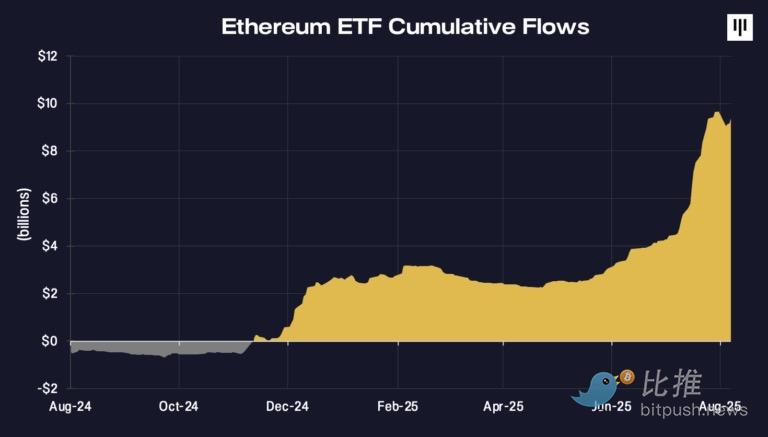
The price of Ethereum in Bitcoin terms has risen 103% since bottoming in April 2025.
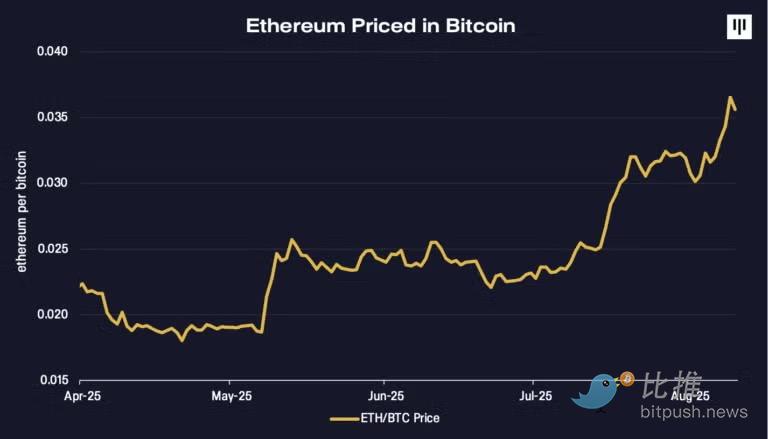
Bitcoin Halving Cycle - Precise Prediction
This is crazy!
During the Crypto Winter, we used research from the previous three Bitcoin halvings to predict Bitcoin would reach $117,482 on August 11, 2025.
It really did!!!
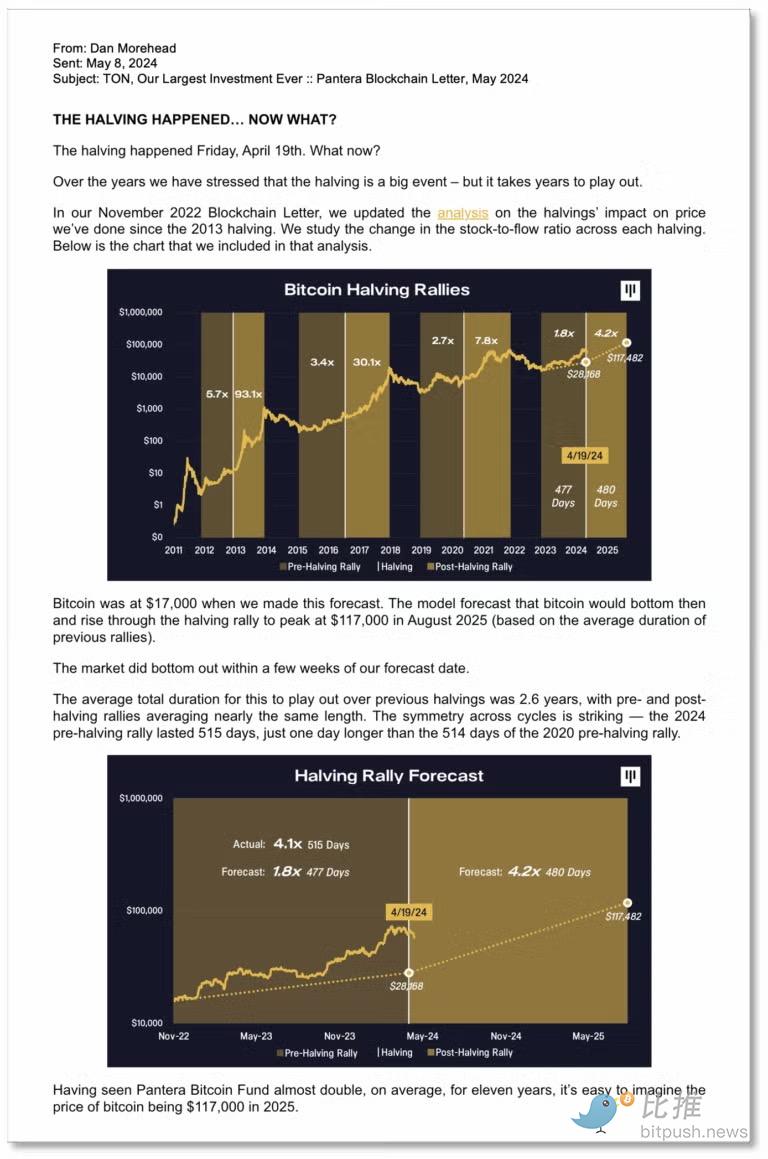
Halving Happened... Updated Version
In our November 2022 'Blockchain Letter', we updated our analysis of the halving's price impact since 2013. We studied the changes in stock-to-flow ratio after each halving. The chart below is an updated version of our analysis at the time.
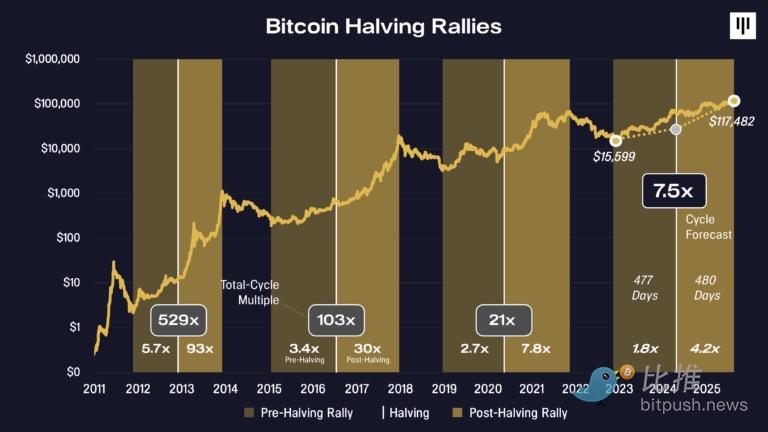
Have a great August,
"Let 'Alternative' Return to Altcoins" – Dan Pantera
Twitter: https://twitter.com/BitpushNewsCN
Bitpush TG Community: https://t.me/BitPushCommunity
Bitpush TG Subscription: https://t.me/bitpush






